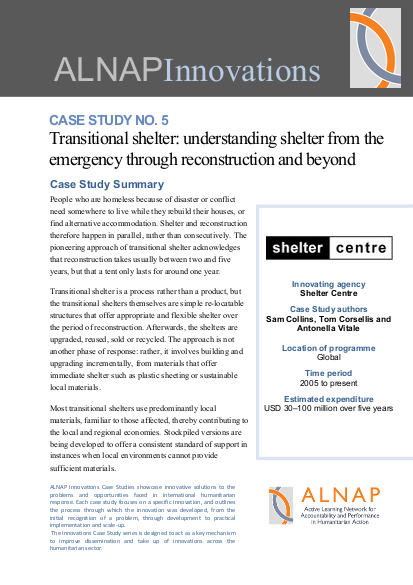
Transitional Shelter is a pioneering approach to the provision of shelter in emergency response, recovery and reconstruction. People who are made homeless because of disaster or conflict need somewhere to live while they rebuild their houses, or find alternative accommodation. Shelter and reconstruction therefore happen in parallel, rather than consecutively. The approach of transitional shelter acknowledges that reconstruction takes usually between two and five years, but that a tent only lasts around one year.
The transitional shelters themselves are simple re-locatable structures that offer appropriate and flexible shelter over the period of reconstruction. Afterwards, the shelters are upgraded, reused, sold or recycled. The approach is not another phase of response: rather, it involves building and upgrading incrementally, from materials that offer immediate shelter such as plastic sheeting or sustainable local materials. Most transitional shelters use predominantly local materials, familiar to those affected, thereby contributing to the local and regional economies.
Since 2005, agencies and governments worldwide have used the transitional-shelter approach to accommodate millions of people affected by both conflicts and disasters, from Kenya to Indonesia. This Innovation Case Study highlights the development of the transitional-shelter approach, using recent examples from several implementing agencies.